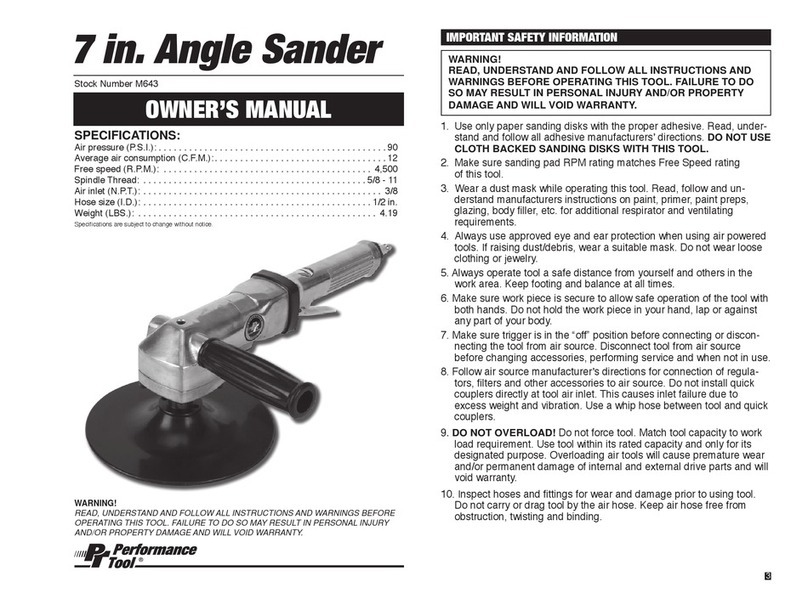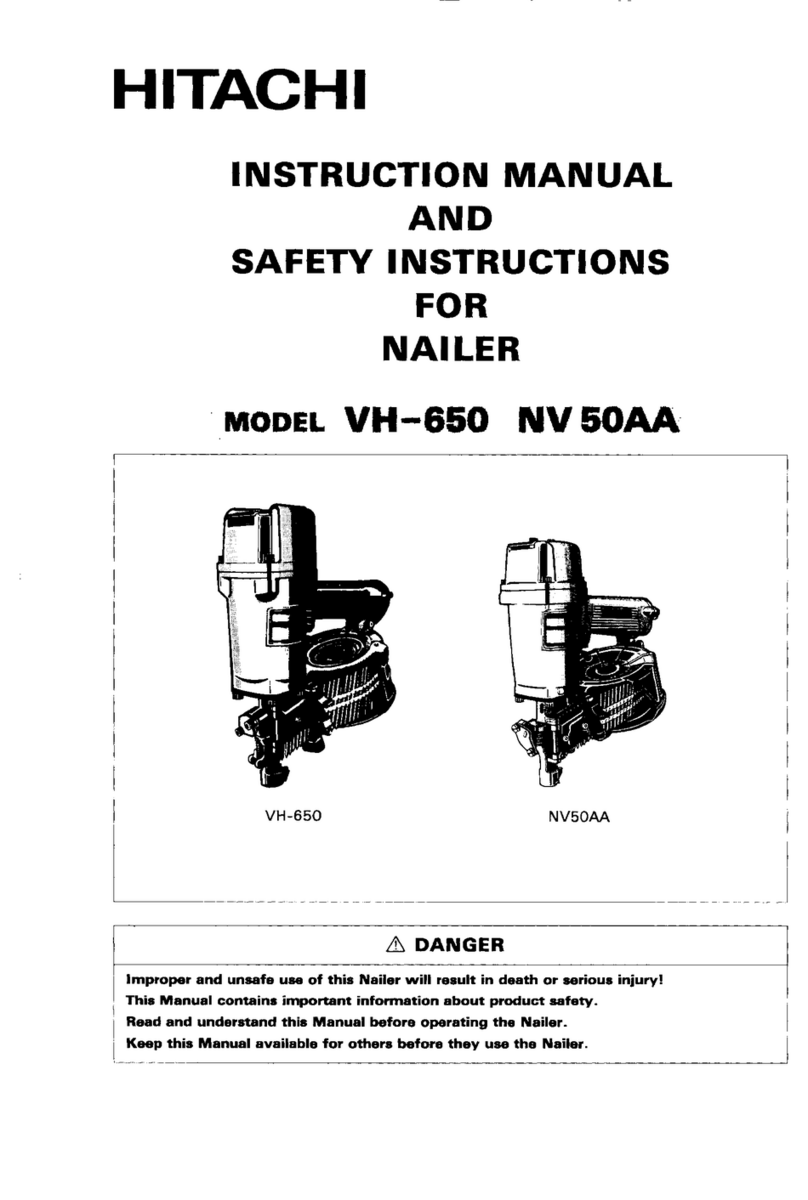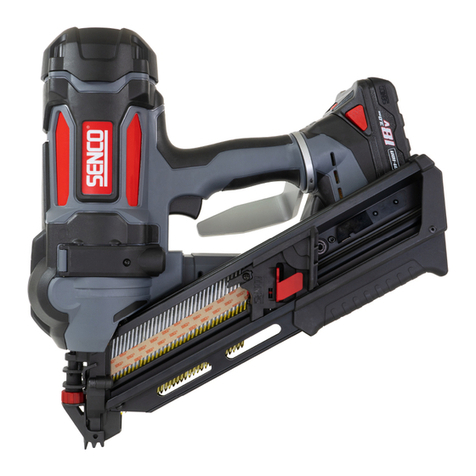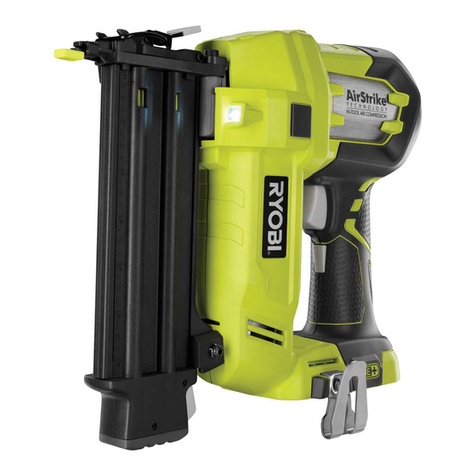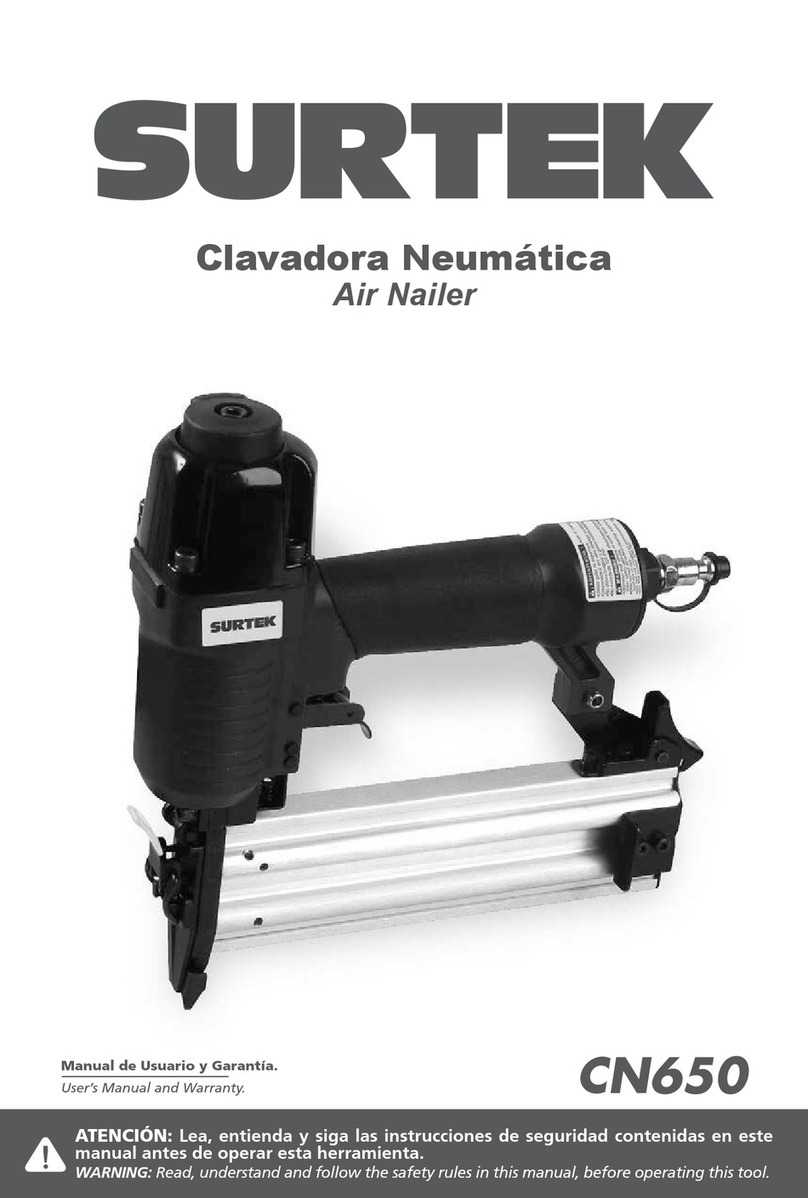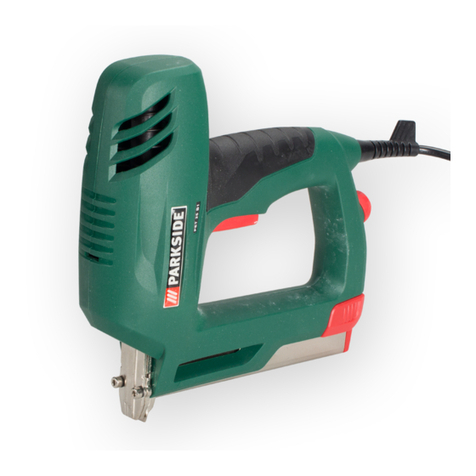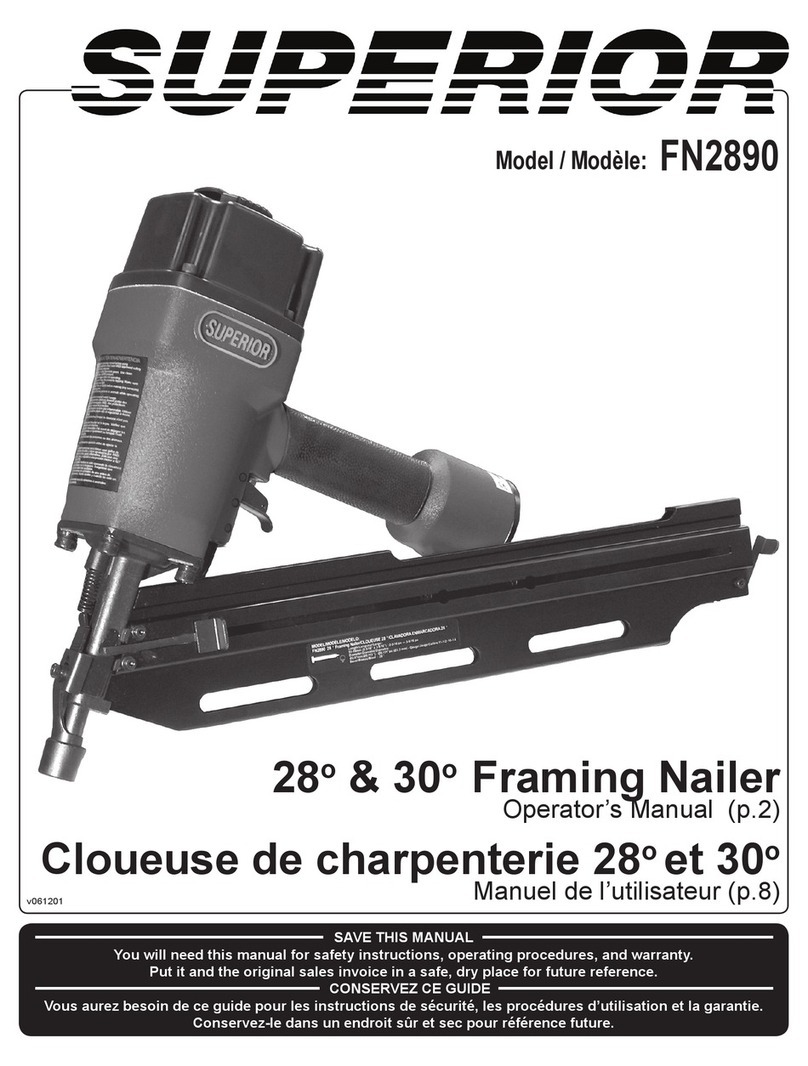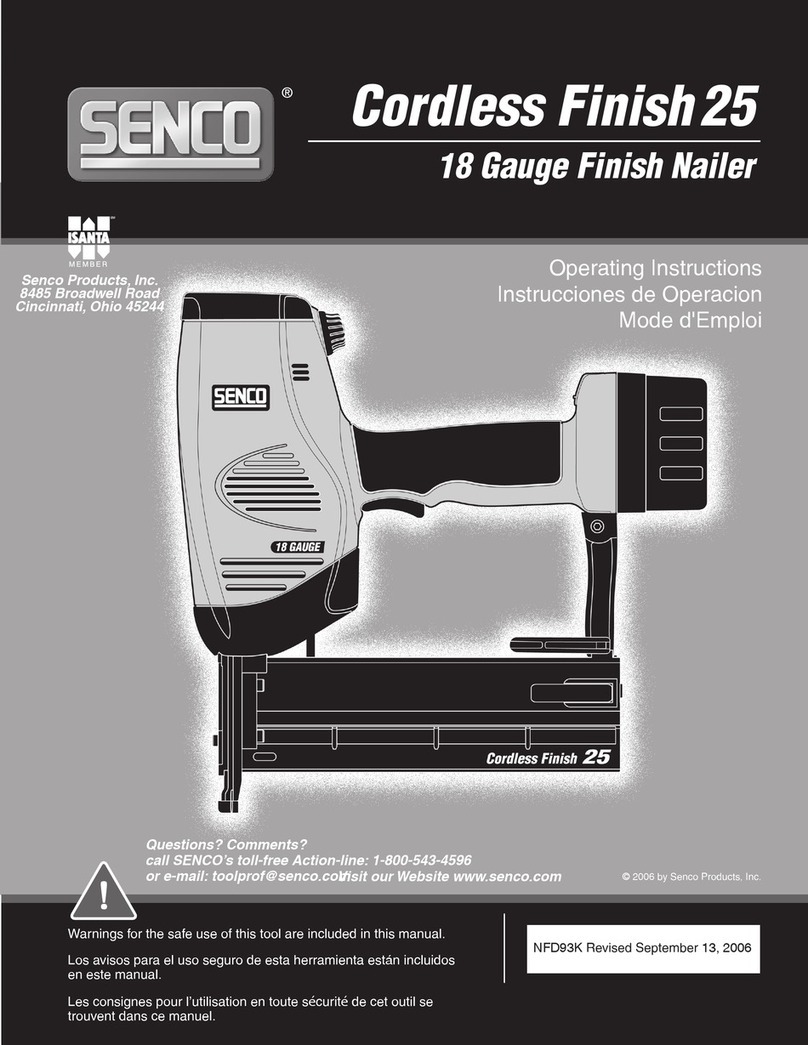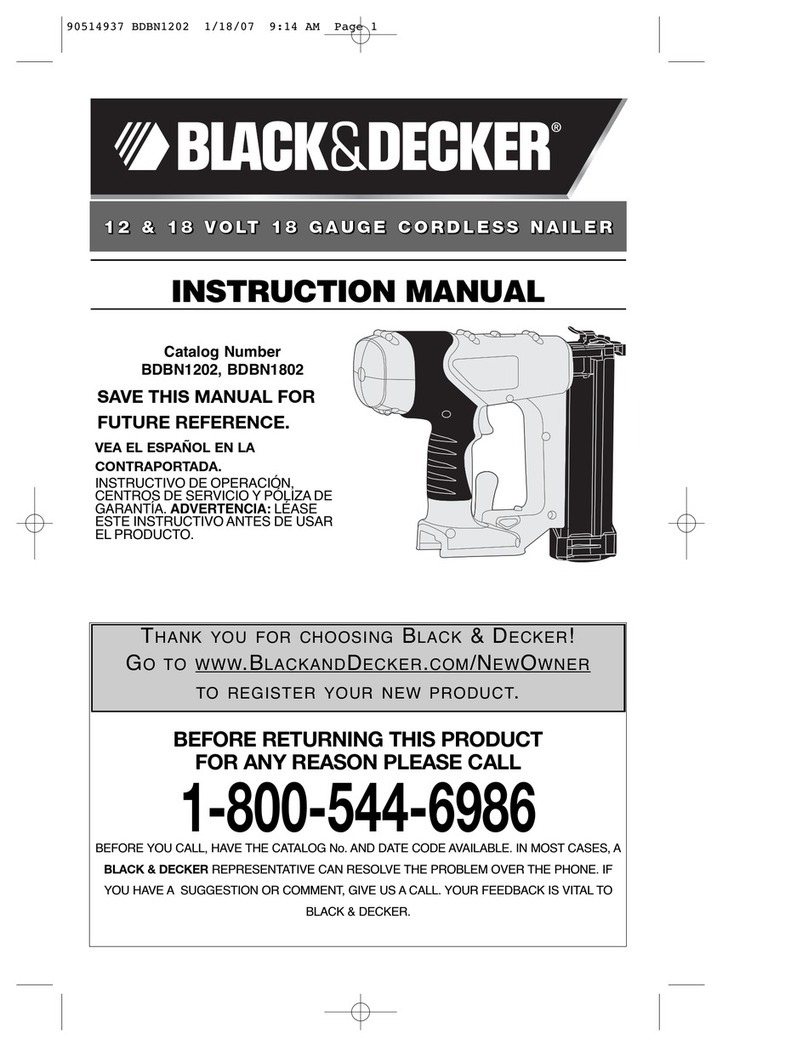AIR SOURCE
The FCN50 is designed to operate on clean, dry,
compressed air, regulated at 70 to 90 psi / 488 to
621 kPa / 4.9 to 6.1 bar. The preferred system
would include a lter, a pressure regulator, and
an automatic oiler located as close to the tool as
possible (within 5 meters (15 feet) is ideal). Do
not use bottled air or gases.
Determine if it is necessary to lubricate. All
compressed air contains moisture and other
contaminants that can harm the internal
components of the tool. An air line lter will
remove most of these and signicantly prolong the
life of the tool. If you are using an in-line automatic
oiler, check and add oil if necessary. If an in-line
oiler is not available, place 2 drops of oil into the
tool’s Air Plug (FCN50-46) at the beginning of each
workday. More than this will be expelled from the
tool’s exhaust during ring.
Air Fitting: The FCN50 is equipped with a 1/4”
NPT male plug for a ‘quick connector’. To prevent
accidental cycling even though disconnected, the
tool must always be connected to the air supply
in such a way that all air pressure in it is released
when the coupling is disconnected.
CAUTION:
=All air line components (including hoses, pipe,
connectors, lters, & regulators, etc.) must
be rated for a minimum working pressure
of 150 psi / 1034 kPa / 10.3 bar or 150%
of the maximum system pressure, whichever
is greater.
=Disconnect the tool from the air supply before
performing maintenance, clearing a jammed
fastener, leaving the work area, moving the tool to
another location, or handing it to another person.
PREPARING THE TOOL
Be sure that the spacer (FCN50-25) attached to
your tool is suitable for the thickness of ooring.
The tool comes with a spacer attached designed
for 20 mm (25/32”) thick (nominally 3/4”) ooring.
If the ooring you are installing is 12.5 mm (1/2”)
thick, remove the three screws (FCN50-26) and
1.
2.
OPERATING PROCEDURES
